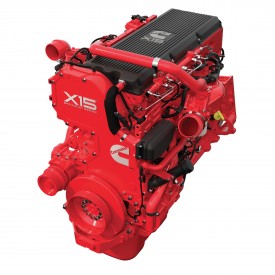Cummins, Tula Demonstrate the Benefits of Diesel Dynamic Skip Fire

Cummins and Tula Technology, a tech leader in improving propulsion efficiency and reducing emissions in passenger cars, are collaborating on a technical demonstration of diesel Dynamic Skip Fire (dDSF). By using dDSF software to control cylinder deactivation, Cummins and Tula have demonstrated significant reductions in emissions and fuel consumption, according to the companies.
“At Cummins, it’s our mission to power a more prosperous world,” said Lisa Farrell, director of advanced system integration at Cummins. “We do this by helping customers succeed through innovative and dependable products that are good for the customer and the environment. We will continue to innovate the diesel engine system to make it lighter, more reliable, powerful and fuel-efficient, and we are encouraged by the progress demonstrated in this collaboration and what it could mean for future diesel technology.”
The project started in early 2019 with the goal of optimizing cylinder deactivation strategies for diesel engines, which could result in emission reduction benefits. Advancements through the project are expected to help address future, more stringent NOx regulations.
The collaboration work was carried out on a Cummins X15 Efficiency Series 6-cylinder diesel engine,. The joint development team modified the engine system to integrate and leverage Tula’s Dynamic Skip Fire control algorithms to command combustion or deactivation on a cylinder event basis. On the challenging low-load cycle being proposed by the California Air Resources Board, modeling of dDSF technology predicted reductions in tailpipe oxides of nitrogen emissions, while simultaneously reducing carbon dioxide.
The reduction of tailpipe oxides of nitrogen is achieved primarily by optimized exhaust temperature control, resulting in dramatically improved conversion efficiency of the aftertreatment system. The technology achieves carbon dioxide reductions through improvements in combustion and reductions in pumping work. Further, dDSF delivers improved tailpipe emissions while simultaneously reducing fuel consumption, allowing for further optimization of these critical parameters.
“Our partnership with Cummins has given us the opportunity to expand our DSF technology beyond its success in gasoline engines,” said R. Scott Bailey, president and CEO of Tula Technology. “Demonstrating the capability to improve fuel efficiency while also achieving very effective emissions control is extremely important for all diesel engine applications in the future.”



